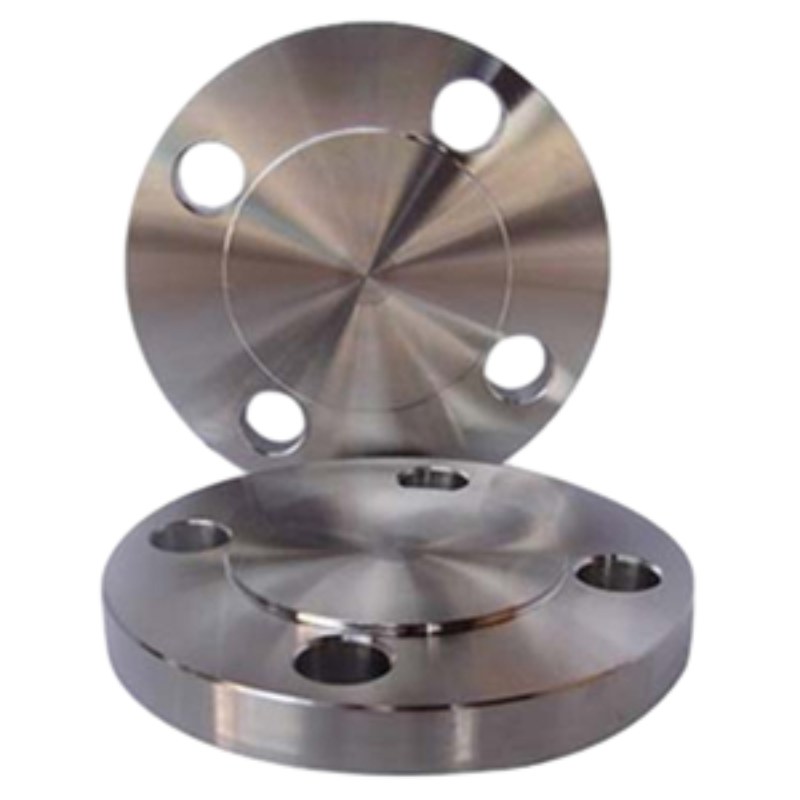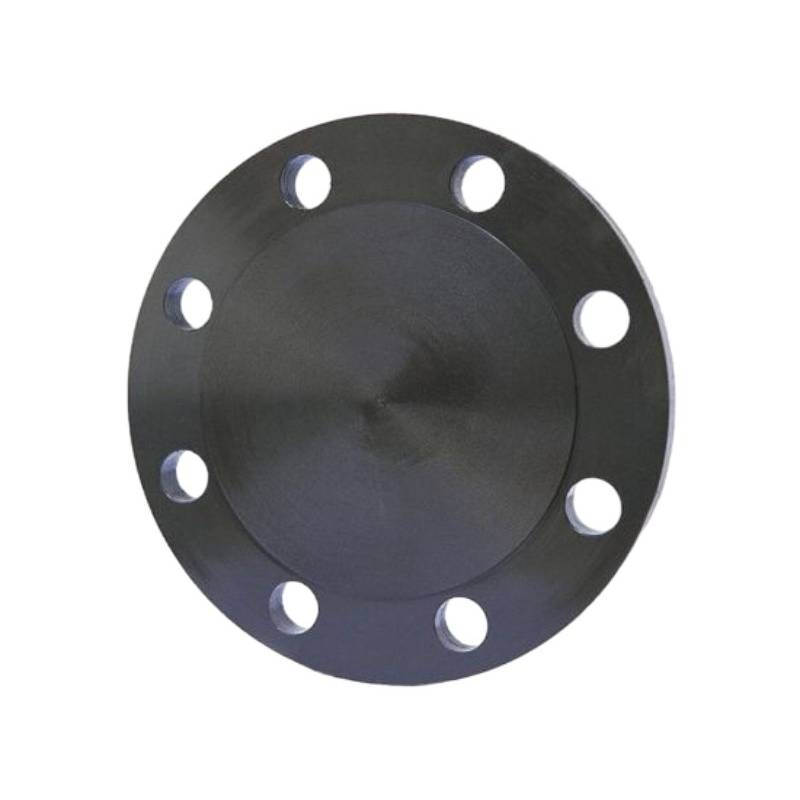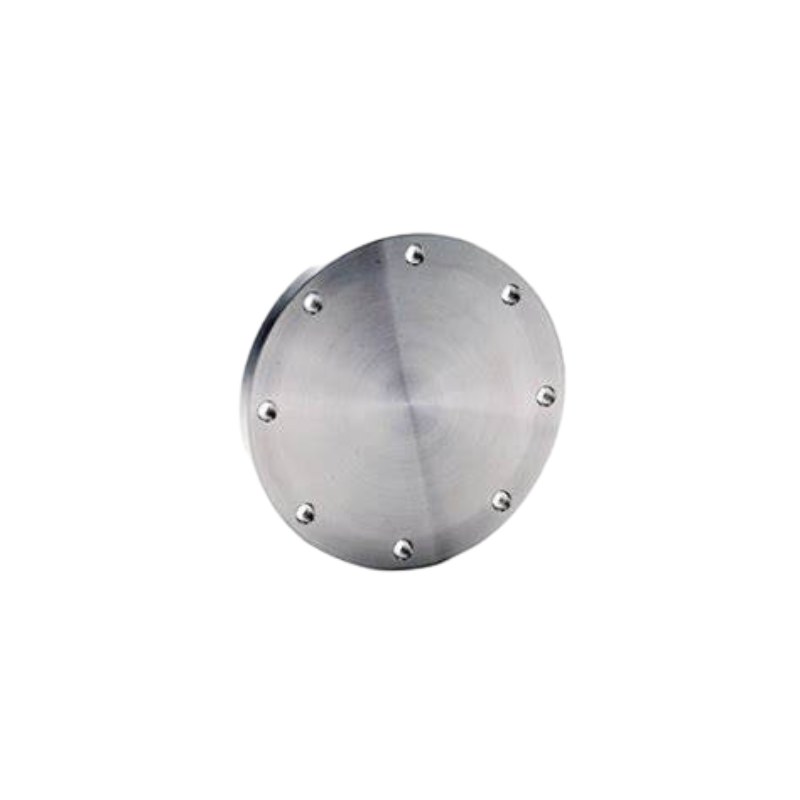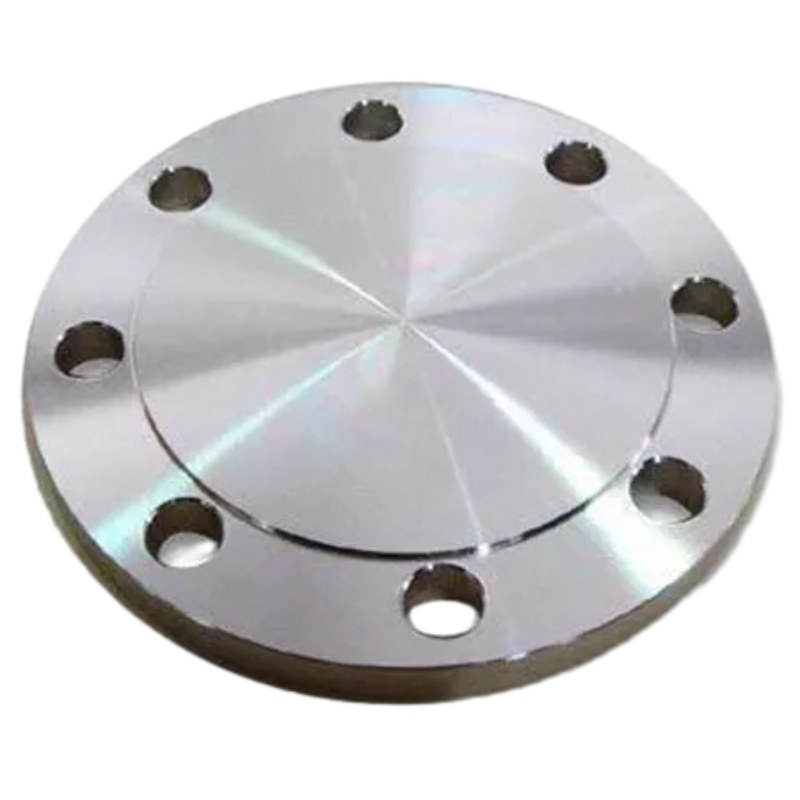-
Fortika Dezajno: La Blinda Flanĝo GOST 12836-67 prezentas platan cirklan platon kun egale interspacigitaj rigliltruoj ĉirkaŭ la perimetro. Ĉi tiu dezajno ebligas facilan vicigon kaj rigliĝon al la pariĝa flanĝo, provizante fortikan kaj stabilan ferman solvon por tubaj sistemoj.
-
Sekura Sigelo: Kiam instalita ĉe la fino de tubo, la plata vizaĝo de la GOST 12836-67 Blind Flange kreas striktan sigelon, malhelpante fluidan elfluon kaj konservante la integrecon de la tubsistemo. Ĉi tiu sekura sigela kapablo certigas optimuman agadon kaj sekurecon, eĉ sub ekstremaj operaciaj kondiĉoj.
-
Multflanka Apliko: De petrolaj kaj gasaj rafinejoj ĝis kemiaj pretigaj plantoj kaj akvodistribuaj retoj, GOST 12836-67 Blind Flanges trovas multflankan aplikon tra diversaj industrioj. Ĉu uzataj por izolaj celoj, premtestado aŭ provizoraj fermoj, ĉi tiuj flanĝoj ofertas fidindecon kaj fortikecon en kritikaj tubaj sistemoj.
-
Daŭra Konstruo: Konstruitaj el altkvalitaj materialoj kiel karbona ŝtalo, neoksidebla ŝtalo aŭ aloja ŝtalo, GOST 12836-67 Blind Flanges montras esceptan forton kaj fortikecon. Ili estas kreitaj por rezisti severajn funkciajn kondiĉojn, inkluzive de korodaj medioj, altaj temperaturoj kaj intensa premo, certigante longdaŭran rendimenton kaj fidindecon.
-
Precizeca Inĝenierado: GOST 12836-67 Blindaj Flanĝoj spertas precizecajn maŝinajn kaj inĝenierajn procezojn por plenumi striktajn dimensiajn toleremojn kaj surfacajn finpolurajn postulojn. Ĉi tiu precizeco certigas kongruecon kaj interŝanĝeblecon kun aliaj normaj flanĝoj, faciligante senjuntan integriĝon en tubaj sistemoj kaj minimumigante la riskon de likoj aŭ fiaskoj.
-
Facileco de Instalado: Instalado de GOST 12836-67 Blind Flanges estas efika kaj simpla, postulante simplan vicigon kaj rigligadon al la tubfino. Iliaj normigitaj dimensioj kaj dezajno faciligas facilan integriĝon en ekzistantaj tubaj retoj, minimumigante instaltempon kaj laborkostojn.
Ĉefaj Trajtoj:
- Fortika dezajno por sekura fermo
- Sekura sigelo kun ebena vizaĝa dezajno
- Multflanka apliko tra industrioj
- Daŭra konstruo por longdaŭra agado
- Precizeca inĝenierado por striktaj toleremoj
- Facileco de instalado kun simpla vicigo kaj boltado
Material Selection for GOST 12836-67 Blind Flanges: What You Need to Know
When it comes to GOST 12836-67 blind flanges, selecting the appropriate material is crucial for ensuring functionality, safety, and longevity in various applications. GOST standards, established by the Euro-Asian Council for Standardization, Metrology and Certification, guide the specification of materials to maintain the integrity of piping systems.
Key Considerations for Material Selection:
1. Corrosion Resistance: One of the primary factors in choosing a material for GOST blind flanges is its ability to resist corrosion. Stainless steel (such as 304, and 316) is a popular choice due to its excellent resistance to oxidizing environments. For applications involving aggressive chemicals, alloys like Inconel or Monel are often considered.
2. Pressure and Temperature Rating: GOST blind flanges need to be rated for the specific pressure and temperature conditions they will face. Material selection must align with the service conditions to avoid failure. For high-pressure applications, carbon steel flanges can be suitable, provided they are properly treated or coated.
3. Weldability and Machinability: Depending on installation requirements, the selected material should offer appropriate weldability and machinability. If modifications or on-site fabrication are necessary, choosing materials that can be easily welded is essential.
4. Standards Compliance: Ensure that the materials selected comply with all relevant GOST standards. This not only guarantees quality but also maintains compatibility within the piping system.
5. Cost-effectiveness: While material selection should prioritize performance and safety, cost considerations also play a significant role, especially in large-scale projects. Finding a balance between budget and quality is essential.
Differences Between GOST 12836-67 Blind Flange and Other Flange Standards
When comparing the GOST 12836-67 blind flange with other flanĝaj normoj, several key differences emerge that reflect the unique characteristics and applications of the Russian standard. The GOST (Gosudarstvennyy Standart) system is a set of regulations and guidelines that govern various industrial products, including blind flanges, which are used to seal off piping systems.
One of the primary differences lies in the dimension and pressure rating classifications. GOST 12836-67 blind flanges are specifically designed according to Russian specifications, with dimensions that may differ significantly from those outlined in ANSI, ASME, or ISO standards. For instance, while ANSI/ASME flanges are typically categorized into nominal pipe sizes (NPS) and pressure classes, GOST-flanĝoj feature a unique set of sizes and pressure ratings, making it essential for engineers to select the appropriate type based on regional standards.
Another notable difference is the material composition. The GOST standard emphasizes the use of specific materials that are suited for the harsh Russian climate and industrial requirements. While common materials such as carbon steel and stainless steel are also used in other standards, GOST may specify additional material grades to accommodate unique environmental challenges, including extreme temperatures and corrosive conditions.
Additionally, the manufacturing and testing processes for GOST 12836-67 blind flanges are subject to local industry regulations, which might include stricter quality assurance protocols compared to other international standards. This ensures that the flanges not only meet dimensional specifications but also effectively withstand the pressures and temperatures expected in typical applications within Russia.
In summary, while GOST 12836-67 blind flanges share similarities with other flange standards, their unique dimensions, material requirements, and quality assurance processes set them apart. Understanding these differences is crucial for engineers and designers when selecting flanges for specific applications in diverse geographical locations.


















